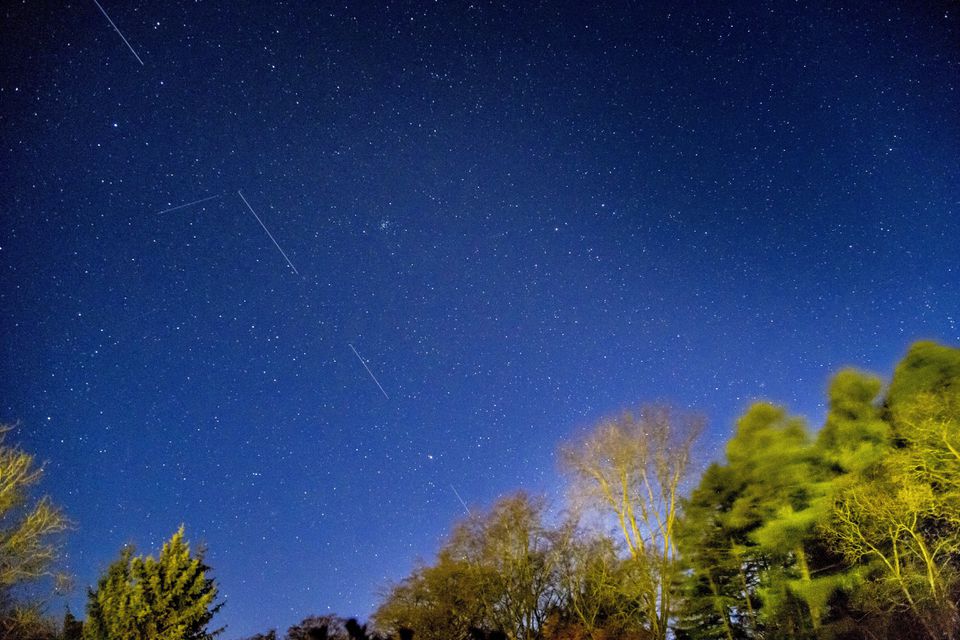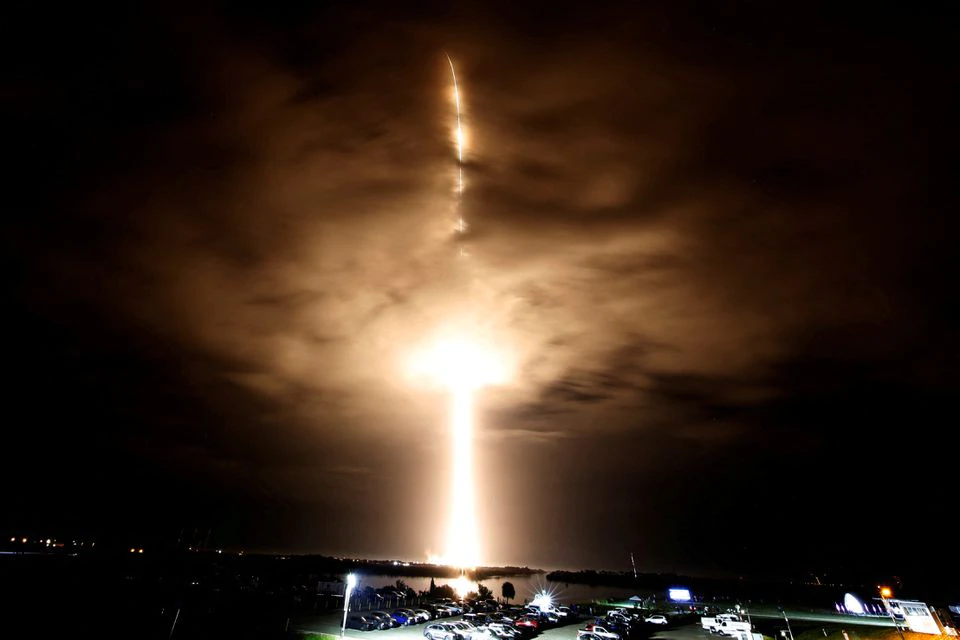A geomagnetic storm triggered by a large burst of radiation from the sun has disabled least 40 of the 49 satellites newly launched by SpaceX as part of its Starlink internet communications network, the company said.
The incident was believed to mark the largest collective loss of satellites stemming from a single geomagnetic event, and was unique in the way it unfolded, Harvard-Smithsonian astrophysicist Jonathan McDowell said on Wednesday.
The company's announcement, posted on its website on Tuesday, said the satellites were stricken last Friday, Feb. 4, a day after they were launched to a preliminary "low-deployment" orbit about 130 miles (210 km) above Earth.
SpaceX said it routinely deploys its satellites to such low orbits at first so they can quickly and safely be allowed to fall back toward Earth and incinerate on re-entry if a malfunction is detected during initial system checkouts.
But SpaceX left unclear whether the company had anticipated the severity of the extreme space weather conditions it faced, fueled by a solar storm days earlier, when it sent its latest batch of 49 satellites aloft.
Space-weather alert before launch
The Thursday launch by a SpaceX Falcon 9 rocket flown from the Kennedy Space Center in Florida roughly coincided with a "geomagnetic storm watch" posted for last Wednesday and Thursday, Feb. 2-3, by the U.S. Space Weather Prediction Center.
The alert warned that solar flare activity from a "full halo coronal mass ejection" - a large blast of solar plasma and electromagnetic radiation from the sun's surface - was detected on Jan. 29, and was likely to reach Earth as early as Feb. 1.
The alert also said resulting geomagnetic storm conditions on Earth were "likely to persist" into Feb. 3 "at weakening levels."
|
|
| A SpaceX Falcon 9 rocket, with the Crew Dragon capsule, is launched carrying three NASA and one ESA astronauts on a mission to the International Space Station at the Kennedy Space Center in Cape Canaveral, Florida, U.S. November 10, 2021. Photo: Reuters |
According to SpaceX, the speed and severity of the solar storm drastically increased atmospheric density at the satellites' low-orbit altitude, creating intense friction or drag that knocked out at least 40 of them.
Starlink operators tried commanding the satellites into a "safe-mode" orbital configuration allowing them to fly edge-on to minimize drag, but those efforts failed for most of the satellites, forcing them into lower levels of the atmosphere where they burned up on re-entry, SpaceX said.
"This is unprecedented as far as I know," McDowell told Reuters. He said he believed it marked the single greatest loss of satellites from a solar storm, and first mass satellite failure caused by an increase in atmospheric density, as opposed to bombardment of charged particles and electromagnetic radiation itself.
McDowell said the incident raised questions of whether the elevated orbital drag caused by the storm exceeded design limits or whether SpaceX believed incorrectly that the satellites could handle so much density.
It appeared from SpaceX's account, McDowell said, that "they weren't expecting to have to handle that much density, in which case it sounds like they weren't paying attention to the space weather reports."
SpaceX did not immediately return queries from Reuters seeking further comment.
McDowell added that geomagnetic storm activity will escalate over the next few years as the sun nears "solar maximum" in its 11-year cycle of sunspot activity.
SpaceX, the Los Angeles area-based rocket company founded by billionaire entrepreneur Elon Musk, has launched hundreds of small satellites into orbit since 2019 as part of his Starlink service for broadband internet. In a Jan. 15 tweet, Musk said the network consisted of 1,469 active satellites, with 272 moving to operational orbits.
The company has said it ultimately envisions a constellation of roughly 30,000 satellites, up from 12,000 previously planned.






















































